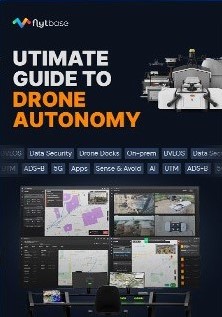Get Your Free Drone Autonomy Guide Today!

Cell-towers, wind turbines, power lines, and almost all infrastructural assets that one can think of, require regular and time-intensive inspections. Generally carried out by humans alone, these inspections are expensive, often full of errors and provide limited analysis & insights about the asset.
Would it not be better if, instead of a technician climbing up a chimney or wind turbine, we simply used an autonomous drone to beam footage to an experienced inspector? Or better still, enhance that device with visual and data analytics capabilities and make it assess the asset's status and maintenance needs automatically.
It was found that, till 2017, up to 85% of asset-based inspections still depended entirely on human effort. By the end of 2018, roughly 60% of all such inspections saw the entry of software-driven drones within their routine inspection processes. Drone-based inspection turns out to be significantly faster, cheaper, more reliable and most importantly error-free. As per a report by Roland Berger, drone-based asset inspections can create savings between 50% and 90% while inspecting facilities like oil rigs and wind turbines.
Why are conventional, manual inspections unsafe, expensive and inefficient?
Conventional techniques employed for infrastructure and asset inspections are phasing out due to multiple deficiencies:
- Human technicians are expensive, hard to find, and often prone to errors
- Major utilities inspection are extremely time intensive and largely inefficient
- Hard to reach areas and inaccessible inspection points negatively affect the accuracy
- Human risk factors involved are very high in the case of wind turbines and power lines
- Manual inspections require prolonged shut-down time which decreases productivity
- Subject-matter experts are remotely located and often unable to participate in real-time
- Regulatory requirements are unmet due to poor repeatability of inspection missions
How can autonomous drones enable reliable, repeatable aerial inspections?
FlytBase-enabled drones can address the above pain points as follows:
- Cost-effective, off-the-shelf drones can be made to fly autonomously from a remote location with the flying path designed to comprehensively cover the inspection premises.
- Live HD video feed can be obtained onto desktops, laptops, tablets or mobile phones from the cloud, over 4G/5G connected networks with minimal latency.
- Drone operators, facility managers, auditors, and inspection experts can assess the structure/asset remotely, from all the possible viewing angles, thereby reducing human risk factors.
- Automated aerial inspections can reduce expenditure on manual technicians by up to 90% and increase accuracy and efficiency by up to 8 times.
- Real-time situational data and live video feed about accidents, mishaps, and critical failures can be broadcasted to the control room, emergency center, hospitals or police station at once.
- Drones require minimal downtime of high-value assets, as they operate subtly causing less interference to on-going operations.
What infrastructure & asset inspections are autonomous drones being used for?
Inspectable assets fall under one of these categories:
- Utilities
- Telecommunications
- Mining & Aggregate
- Oil & Gas
- Chemical
- Transportation
They can further be broken down into structures like cell towers, power lines, power substations, wind turbines, gas pipelines, oil refineries, aggregate facilities, storage tanks, bridges, etc.
Drones inspection can benefit each of these facilities at a fraction of the regular cost. With FlytBase acting as remote command center for drone fleet operations, inspectors get real-time, remote drone control and can make them hover precisely where required.
{{pdf-form}}
Drones then relay live telemetry and HD video onto the stakeholders’ laptops/mobiles/tablets, as well as allow remote gimbal control, from a safe distance, through a 4G/LTE/5G network to capture high-quality images and video for manual and automated analysis.

Subject matter experts, inspection executives, safety heads and risk managers can thus make informed decisions based on qualitative and quantitative data and initiate faster corrective responses, and thus minimize human risk, inspection costs and process time.More details about how drone operators are using FlytBase for inspections? Click here.
How can drones be easily, quickly adopted for inspection use-cases?
FlytBase offers a 28-day free trial for users to explore FlytBase Business edition and its relevance to specific use-cases for inspection stakeholders.
Customers can add their drone fleets, fly them autonomously, create flight plans & coordinate missions, set geo-fence and checklists, view and store live video footage and integrate drone operations into existing asset management systems.
Start Now and fly your drone(s) via a free trial in 5 Easy Steps.
FAQs
Find quick answers to common questions about compatibility, setup, features, and pricing



.webp)
.svg)
.webp)



